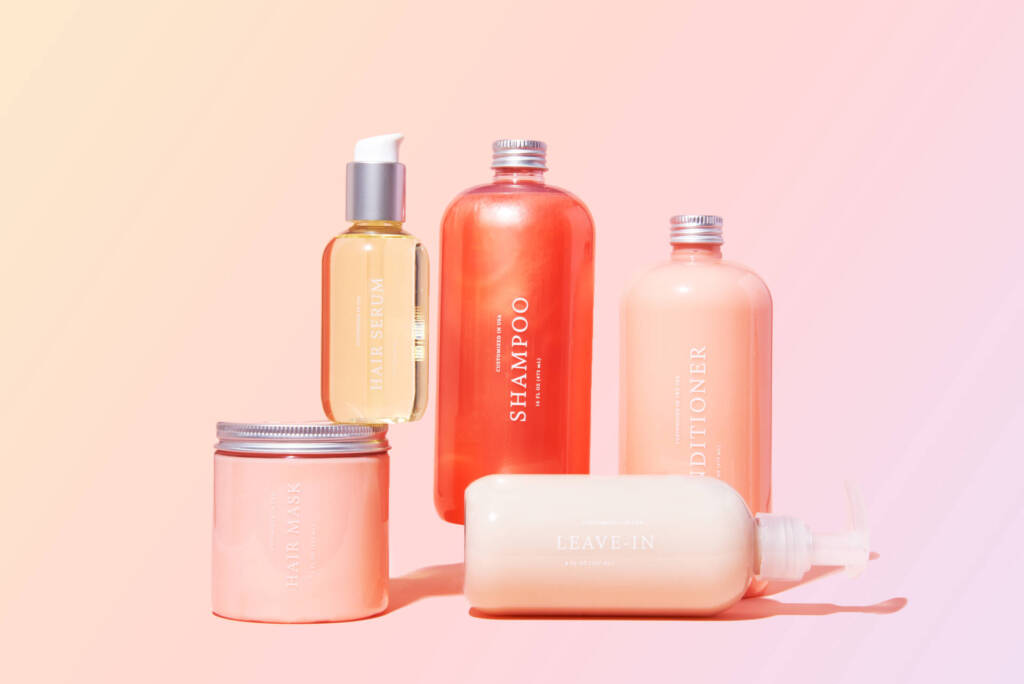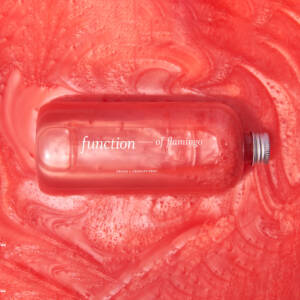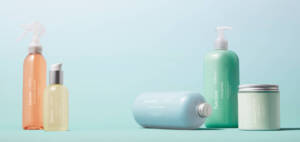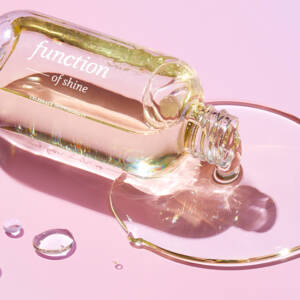You’ve probably heard of shea butter-infused lip balms, body lotions, and hand creams. But did you know that the luscious nut butter also appears in numerous hair products? In fact, it’s a classic ingredient for moisturizing dry strands and soothing a flaking scalp.
Below, you’ll discover the humble origins of shea butter and why it’s touted as a gift from Mother Nature. You’ll also learn about the three amazing benefits of shea butter for hair. Last but not least, we’ll show you how to add this natural ingredient to your haircare routine stat.
Shea Butter for Hair: A Gift From Mother Nature
Shea butter, also called karite butter, is traditionally used as a natural ingredient in sub-Saharan Africa for medicinal and culinary purposes. As a beauty ingredient, specifically in hair care, shea butter is thought to have superior moisturizing properties compared to other kinds of vegetable butter.
Given that the shea butter industry provides ample employment opportunities for women in Africa, the butter is also nicknamed “women’s gold.” As unrefined shea butter has a yellow-golden hue, it’s a pretty apt name.
ICYDK, shea butter comes from the nuts of the shea tree (aka karite tree). This tree is native to the Sudano-Sahelian belt in Africa and is further classified into two subspecies:
- Vitellaria paradoxa, which mainly grows in West Africa
- Vitellaria nilotica, which can be found in East Africa
The shea tree is prized for three things:
- Pulp, which is rich in vitamin C
- Kernels, which are rich in fats
- Butter, which is extracted from the fats in the kernels
Traditionally, African women collect the nuts of the shea tree. They then deshell the nuts and boil the kernels in water. Once the mixture has cooled and solidified, they scoop the butter out. Voila! You now have unrefined shea butter, otherwise known as raw shea butter.
In commercial settings, the production of refined shea butter for hair is mechanized with screw pressing. This improves the extraction rate for product consistency and quality. Shea butter made this way typically sports an ivory white color without any scent.
According to science, shea butter is chock full of hair-nourishing substances, ranging from fatty acids to vitamins:
- Palmitic acid
- Stearic acid
- Oleic acid
- Linoleic acid
- Arachidic acid
- Carotene
- Vitamin A
- Vitamin E
- Calcium
- Magnesium
- Zinc
- Iron
With a legion of antioxidants, it’s no wonder why so many people have been using shea butter as part of their haircare routine.
Fun fact: Shea butter is commercially known as Butyrospermum parkii, even though its correct botanical name is Vitellaria paradoxa.
3 Benefits of Shea Butter for Hair
What can shea butter do for your hair? Turns out there are several benefits associated with this creamy nut butter.
1. A Natural Moisturizer for Dry Hair
Because of shea butter‘s high fatty acid and vitamin E content, it’s a strong emollient that functions as a natural moisturizer for your hair and scalp. Research shows shea butter has “good water-binding properties” to help your mane attract water into its fibers. In other words, you can count on shea butter to maintain and improve your hair’s hydration levels.
More than that, shea butter easily sinks into hair shafts without leaving behind a greasy residue. What it does leave behind, though, is a thin moisturizing film on the hair cuticles that acts as a sealant. This helps your hair strands keep in moisture, a boon for high porosity hair that tends to suffer from extreme moisture loss. And we all know what hydrated fibers mean — hair that feels oh-so-soft, minus the frizz.
2. A Defense Mechanism Against Hair Damage
One of the primary contributors to hair damage is raised hair cuticles. The increased number of pores on the cuticles means your mane loses moisture faster than it can retain it. Even worse, fiber-damaging chemicals can now enter the hair shafts with ease. Your first priority, then, is to fill in the cracks in your cuticles so that you can nip hair damage in the bud.
As explained earlier, shea butter for hair does a splendid job of blanketing your cuticles with its moisturizing film. This protective layer achieves two important functions when acting as a defense mechanism against hair damage:
- It reduces friction to minimize split ends and hair breakage from mechanical forces like hair brushing
- It enhances shine to improve the appearance of dead hair
And the proof is in the pudding, as noted by the Journal of Clinical and Aesthetic Dermatology. Based on a 2017 study, researchers examined the hair-protecting effects of a miracle fruit seed oil whose chemical composition mimics shea butter‘s. The results showed that the high fatty acid content in the oil formidably reduced hair breakage, suggesting the same benefits can be experienced with shea butter itself.
3. A Balm for Scalp Irritation
Shea butter has long been wielded against dry skin in skincare products. As such, it comes as no surprise that shea butter is used to tackle dry scalp issues in hair care.
Because shea butter naturally contains triterpenes (plant-derived compounds with strong antioxidant activity), the nut butter is a soothing balm against common scalp irritations like flaking, dryness, and itchiness. The Journal of Clinical, Cosmetic and Investigational Dermatology backs this up: plant-based ceramides made from shea butter (and other natural oils) accelerated the recovery of a damaged skin barrier and significantly boosted hydration levels.
Who Should Use Shea Butter for Hair?
Due to shea butter‘s thick, buttery texture and ultra-moisturizing properties, it’s best suited for:
- Dry hair
- Damaged hair
- Natural hair types, like curly hair and coily hair
- Coarse hair
On the flip side, shea butter can easily weigh down fine hair. It may also be too rich for an oily scalp. If you would still like to give shea butter a go, start with small amounts on the tips of your hair. This way, you can gauge how your mane reacts to it without risking greasy, flat hair.
How to Use Shea Butter for Hair
Incorporating shea butter into your haircare routine is easy-peasy. Let your creative juices flow, and DIY your own conditioners and hair masks. Or you can skip all the work and add shea butter hair products to your shopping cart. It’s a win-win situation either way.
Here’s how to make whipped shea butter from scratch:
- Melt 100% natural shea butter in the microwave or a mixing bowl over hot water. You can find raw and unrefined shea butter at your local health food store, beauty supply shop, and even Amazon.
- Once the butter is completely melted, add a carrier oil, such as coconut oil, castor oil, or jojoba oil.
- Use a stand mixer or a whisk to mix the concoction thoroughly for a fluffy, whipped texture.
- Transfer the whipped shea butter into a clean container before storing it in a cool, dry area.
Once you’ve created your whipped shea butter, it’s time to put it to great use. You can use shea butter as a nourishing hair mask:
- Apply the whipped shea butter on damp hair. If you have fine hair or an oily scalp, only apply the mask from the mid-lengths down. For dry/damaged hair or a dry scalp, apply the mask from the roots to the tips.
- Put on a shower cap and let the mask sit for at least 30 minutes before rinsing it off.
Tip: Do a patch test for potential allergic reactions. Apply a tiny amount of the shea butter hair mask on your skin and see how it reacts before applying it to your locks and scalp.
Butter Up Your Tresses With Shea Butter for Hair
In a nutshell (see what we did there?), shea butter is an all-powerful haircare ingredient for dry, thick, and natural hair types. If your hair skews toward oiliness or thinness, but you’re still keen on shea butter, use it sparingly on the tips of your mane.
Whether you want to smooth out frizzy hair or fend off breakage, shea butter is your go-to hair treatment. Try it in its natural form or choose hair products infused with it. Function of Beauty’s 100% sulfate-free and vegan haircare line gives you the option of including shea butter in your customized products. Just add the “deep condition” hair goal when you take our hair quiz!





